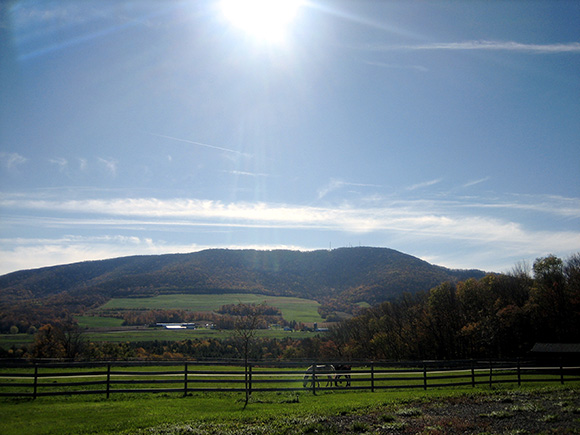Parasites and Pasture Management
By Nikki Alvin-Smith
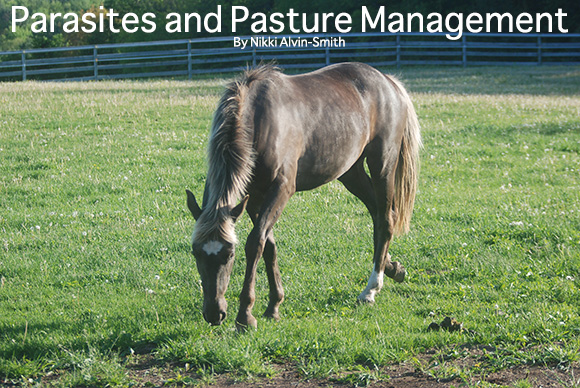
The aim of any targeted horse worm control program is to minimize the exposure of the horse to live infective stages of each internal parasite. Careful management of your horse’s environment is key to achieving success in this endeavor.
Once a pasture has been contaminated i.e. infective larvae have been passed from their host to the pasture, there are various methods available to control their spread.
The hygiene of your fields or paddocks is best maintained by removing the horse feces from the pasture on a regular basis. Aside from an expensive manure vacuum cleaner, which would be wonderful but is beyond the budget of most of us, the hands-on method of fork and wheelbarrow will suffice. Daily picking of the pastures is a daily grind, and one that many of us seek to delegate. Aside from picking pastures, other options for pasture hygiene in the matter of minimizing worm contamination you may have been told to follow may include mowing or harrowing.
Unfortunately, the rough patches of pasture that your horses use as their ‘toilet area’ are an actual benefit to the horse when it comes to its avoidance of grazing worm infected pasture. Unsightly as they may be, do not be tempted to mow them out. When a horse has its designated areas to defecate, it will be unlikely to graze those areas unless it is unhappily short of grass and the pasture is overgrazed. Its natural instinct is to avoid those rough areas for its dining delight. Young horses and foals may not have developed the instinct to graze away from manure areas, so they are more at risk for parasitic infection than adult horses. As to when infected worm larvae are deposited in the manure piles, they are sheathed with a protective layer. Their ability to migrate from those piles as they hatch is only one to one and a half feet in distance, unless rain or water flow or foot traffic moves them elsewhere.
You may also be tempted to harrow these rough patches of grass to break up the manure balls and spread them around. Perhaps you believe that as long as it is done after the first frost, the cold temperatures will cause the larvae to die. Unfortunately once again, this is not true. Worm larvae may become inactive during colder temperatures, but they do not all die. In reality the worm larvae are much more tolerant of cold, wet weather than of hot dry weather. So if you are going to harrow or mow out pasture you are best off doing it during the hottest and driest time of the year. In order to complete their life cycle the infective worm larvae actually need to be ingested by the horse fairly quickly, as they have limited energy reserves and use more energy to survive in temperatures of 85-90 degrees Fahrenheit than they do in cooler temperatures.
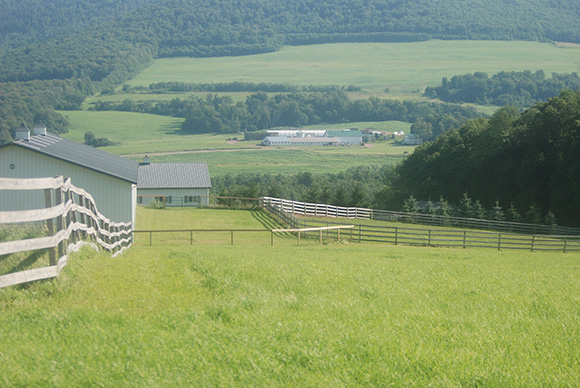
You may believe that leaving fields fallow will also eliminate parasites in the grazing environment. This may mitigate the number of worms on site, but infective roundworm eggs have been shown to survive as long as ten years, so it is no guarantee. Having said that if you are going to use pasture rotation it will help decrease the worm population but the timing of that rotation is critical and depends on where you live. In northern climates it is unlikely that a short break for the pasture of 2/4 weeks is going to have much impact of pasture contamination. Longer periods are needed and hopefully you can wait until the new grazing season altogether. For example, leave the pasture empty of horses from Fall to the beginning of the following Summer. Ideally in temperate climates you should move horses mid-summer to a pasture that has not been grazed in that season.
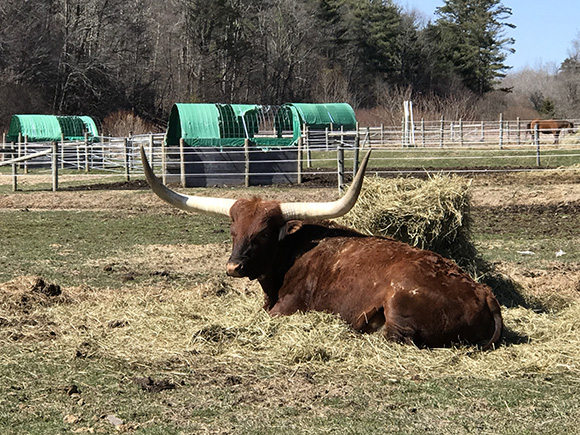
Other methods to control the worm population in the pasture may include cross grazing or alternate grazing. While horses, sheep and cows can share pastures with only one worm, Trichostrongylus axie, as a shared infective parasitic worm, the grazing of a herd of multiple animal types may cause overgrazing, which will not help reduce the number of worms present on the pasture. It is much better to alternate grazing between species, allowing the horse to graze and then moving him to a fresh pasture and switching sheep, goats, or cows to do a clean up graze around those rough patches of grass. As aside from Trichostrongylus axie, other types of worms found on the contaminated pasture are not cross infective across the species, this is a good method to minimize the overall worm population on a pasture.
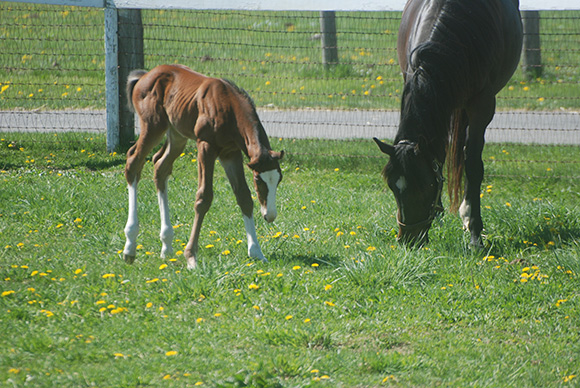
Pastures can also be plowed down and renovated in an attempt to mitigate the worm population present. While nutritional benefits of herbs and grasses will be aided with reseeding as weeds are plowed out, plowing down strongylid larvae may diminish their infectivity. Although they can survive plowing and rise back to the surface of the soil, the energy they expense in this migration back to the surface is significant and their survival is thus compromised. Roundworms on the other hand have egg shells that prevent their return to the surface. While they can remain dormant and be seen back on the soil surface if the pasture is plowed again another year, when they are plowed under the surface they are effectively removed from the grazing area for horses. This is an important thing to consider if you have foals or a young horse population, which is more prone to roundworm infection than an adult equine population.
This brings us to the major factor to consider in maintaining a hygienic pasture, the worm host, the horse. While mites and flies also play a role in certain types of worm life cycles, the horse and his ability to harbor a parasitic worm population without any apparent clinical sign is the key component in your targeted horse worm control program. You need to know which of your horses carry high worm counts i.e. high worm egg shedders, and which are low or medium shedders.
We spoke with parasitology expert, John Byrd, D.V.M., of Horsemen’s Laboratory to find out more about the difference between high, medium and low shedding worm egg counts in horses. Dr. Byrd’s laboratory has tested over 75,000 equine manure samples.
“Through our testing services for the horse owner that we have been conducting for many years, we have noted that only about 12% of the horses tested show a high shedding worm egg count. It has been documented that 80% of the infective worm eggs on a pasture are generally shed by just 20% of the horse herd population present. By conducting a simple F.E.C.T. (Fecal Egg Count Test) you will know which of your horses fall into which category. “
It is recommended that after testing and finding out if your horse is shedding worm eggs, you should then administer a targeted type of dewormer to effect a reduction in their egg count, hopefully by 90% or more. If repeat testing shows continued high shedders are present in your herd, it may also be prudent to separate your herd between low and high shedders, to minimize cross contamination within the herd. This is particularly important if your herd includes breeding stock and foals and youngsters, or has an elderly or physically at risk population.
After you have administered the targeted treatment a quick retest will ascertain that the desired minimum of 90% reduction in shedding worm egg count has been achieved, and that there is no presence of a worm population resistant to the dewormer.
This brings us to the topic of quarantine practices. I am sure many of you share the belief that deworming a new equine arrival and keeping him in a stall, out of the pasture for a few days while he presumably sheds his hosted worm eggs, will ensure no contamination to your pasture of a new worm population.
Sadly this is not a proven method to prevent contamination of your pastures.
For example, while deworming the new horse with any broad-spectrum treatment should remove Strongylus vulgaris from the host, it will not remove worms that are present in their migrating larval stage.
There is also the issue of drug-resistant worm populations that may be introduced with the arrival of a new horse.
For both cases it is imperative to do an worm egg count test, treat the horse with a targeted dewormer, and keep the horse quarantined for 14 days and then retest the horse to make sure that deworming has been effective. If it has not, treatment with another type of dewormer will be required.
A.A.E.P. guidelines suggest F.E.C.T. testing as part of your targeted horse worm control program. Evidence based treatment of parasites in the horse will help build a more sustainable approach to internal parasite control as dewormers will be targeted to specific worm treatments and dewormer resistance is less likely to increase at the levels at which it is doing today. Certainly the days of 6-8 week blind administration if dewormers is an old protocol, forty years old in fact. It is important that we all get with the times!
You can purchase F.E.C.T. kits online at Horsemen's Laboratory and if you would like consultation on the results or indeed any help in regard to your horse worm control program, please call Dr. John Byrd at 800-544 0599
